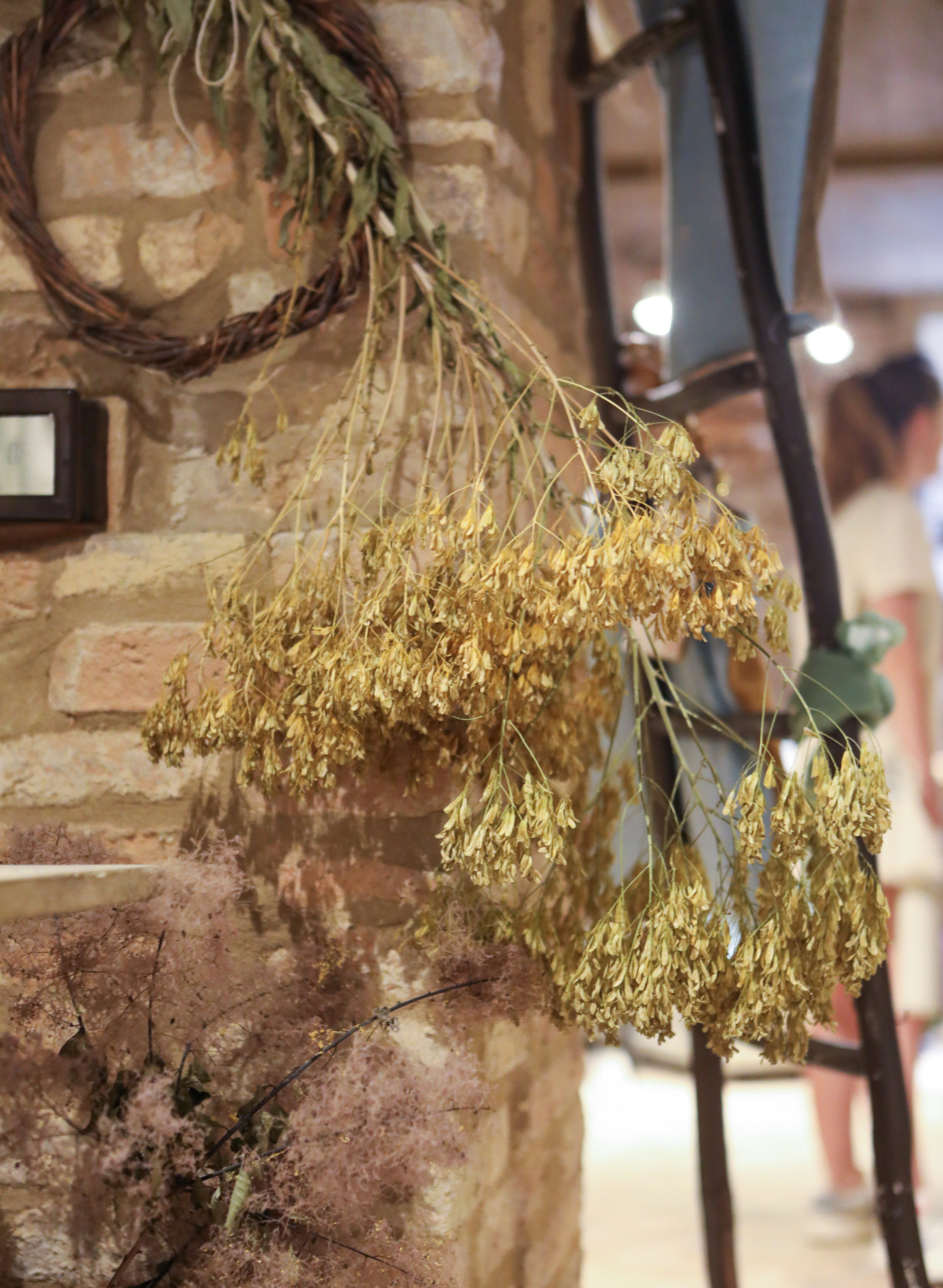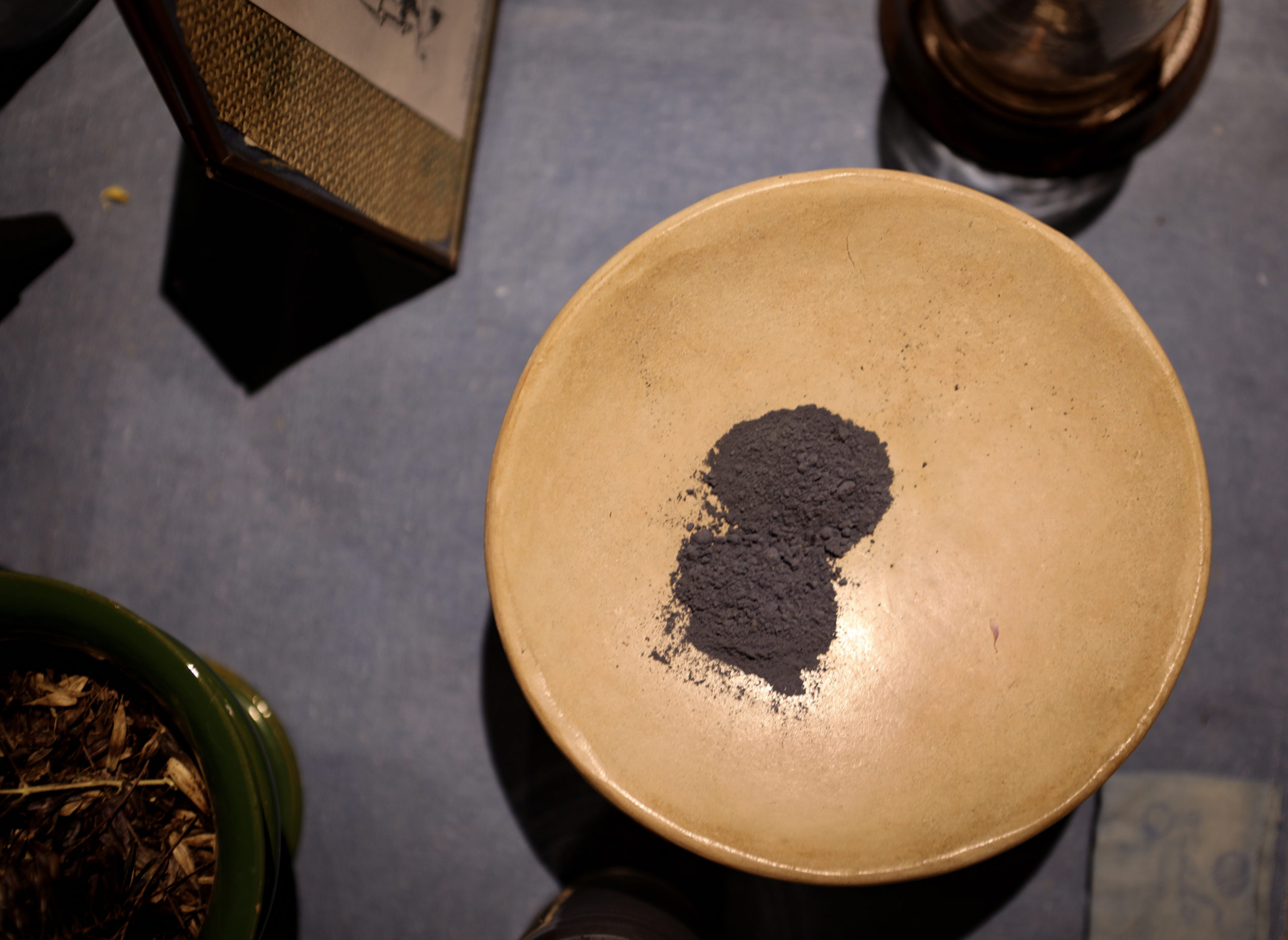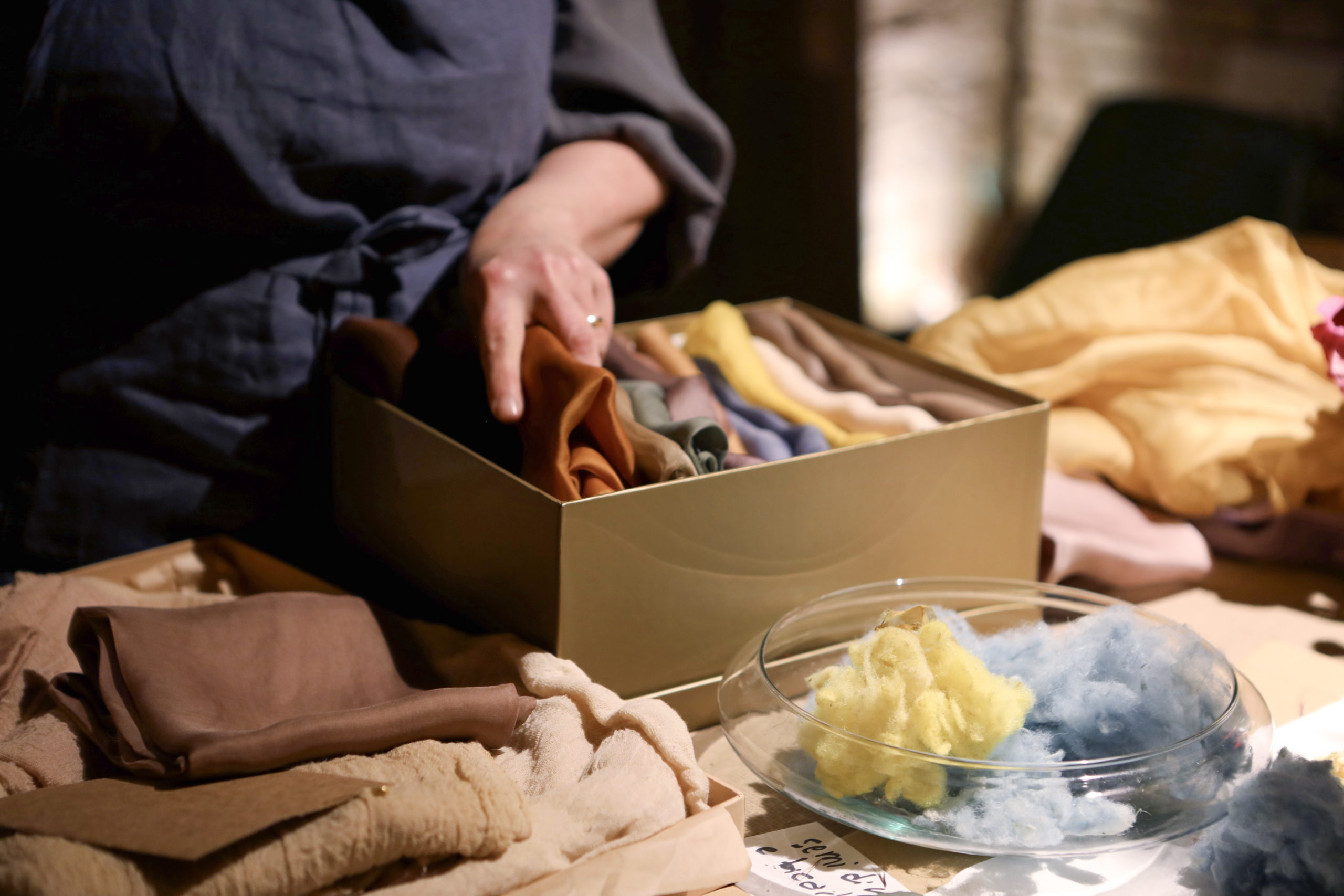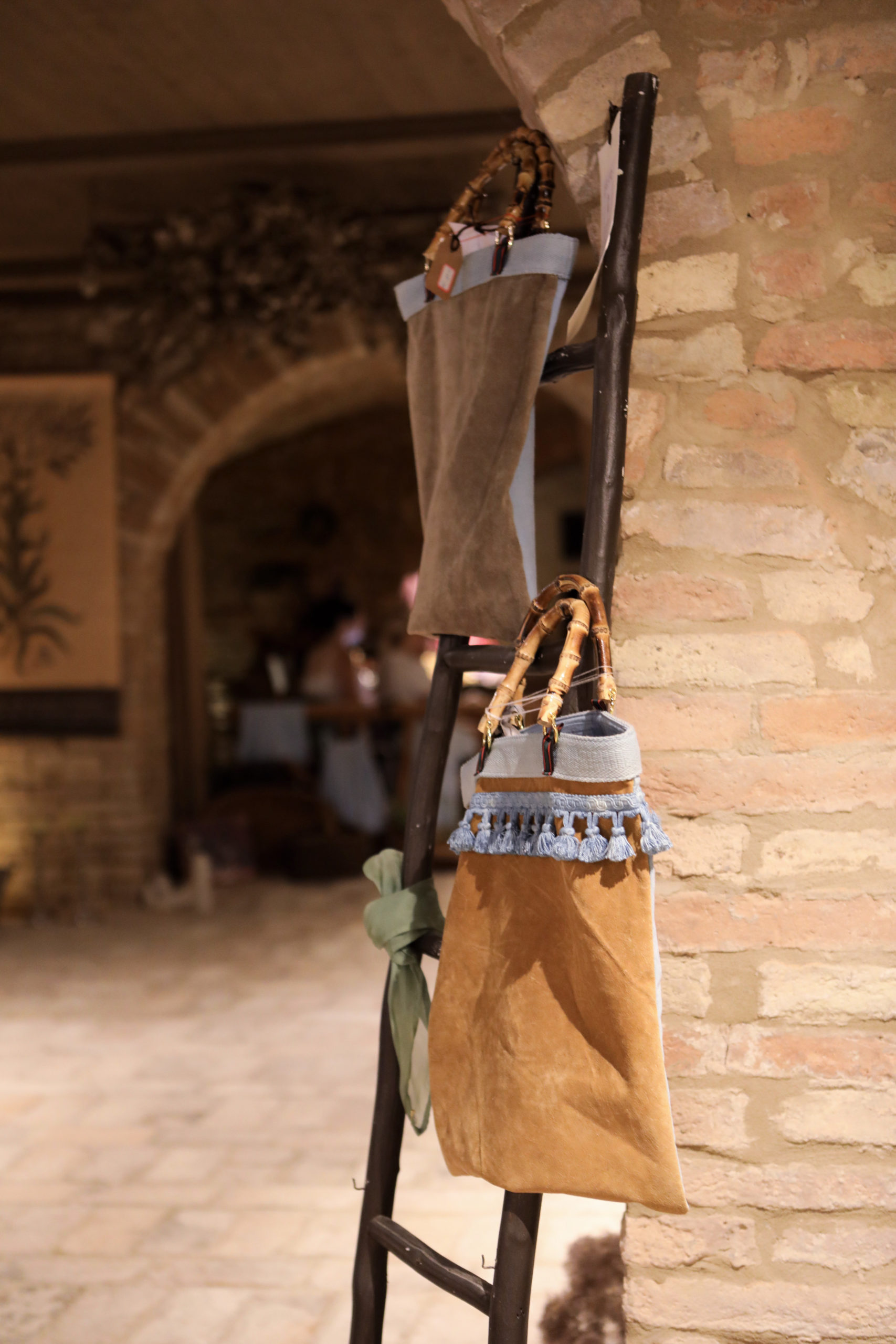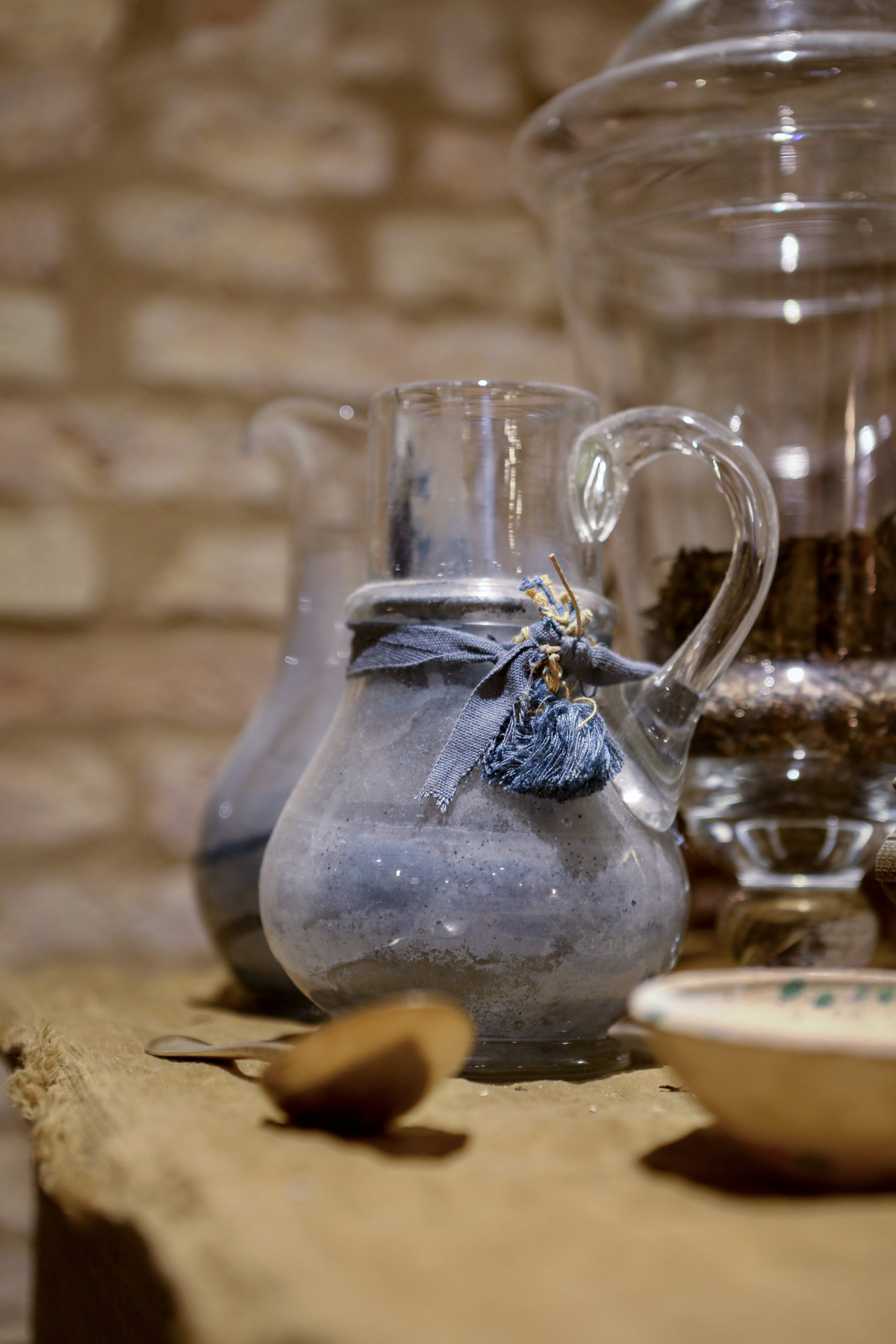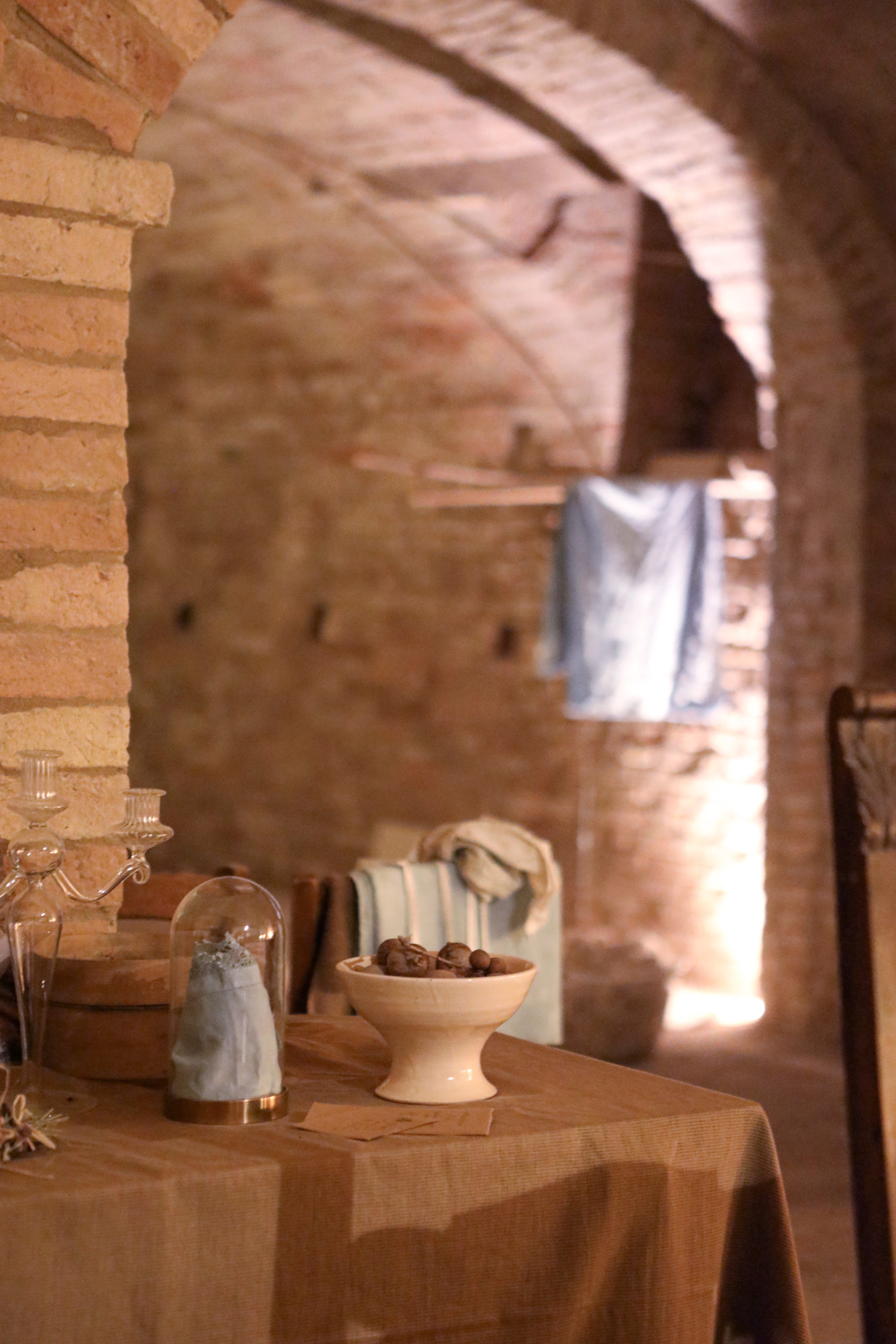Photos By Lucia Gabel & Story By Clara Campbell
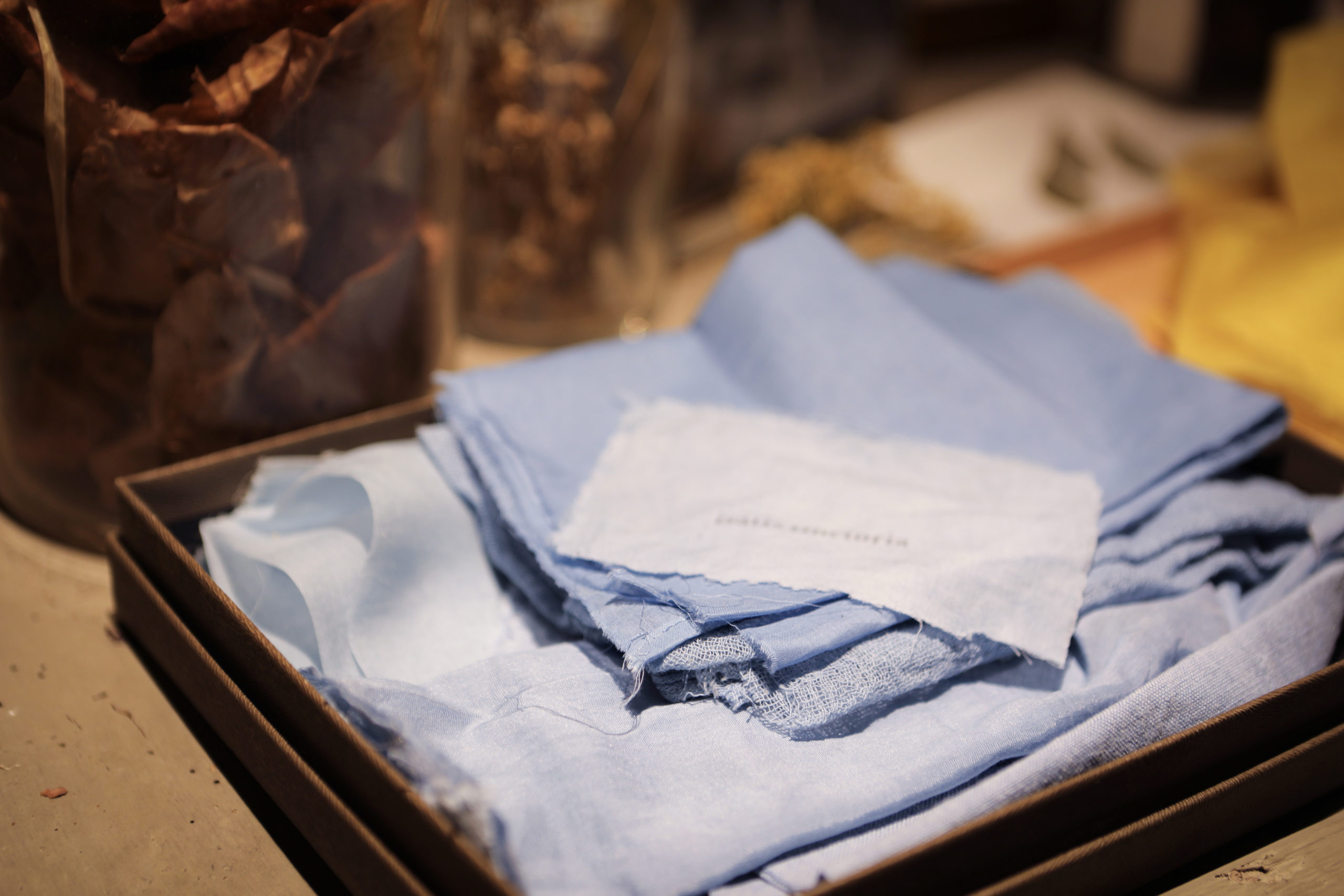
Renaissance Woman In a Renaissance Town
Business owner, artist, historian, craftsman, and a dabbler in science: Alessandra Ubaldi is an Urbino native and is the true definition of a renaissance woman. The owner of a multifaceted fabric dyeing workshop in Urbino really does it all, and has helped in retelling history with a shade of blue that was essentially extinct until recent years.
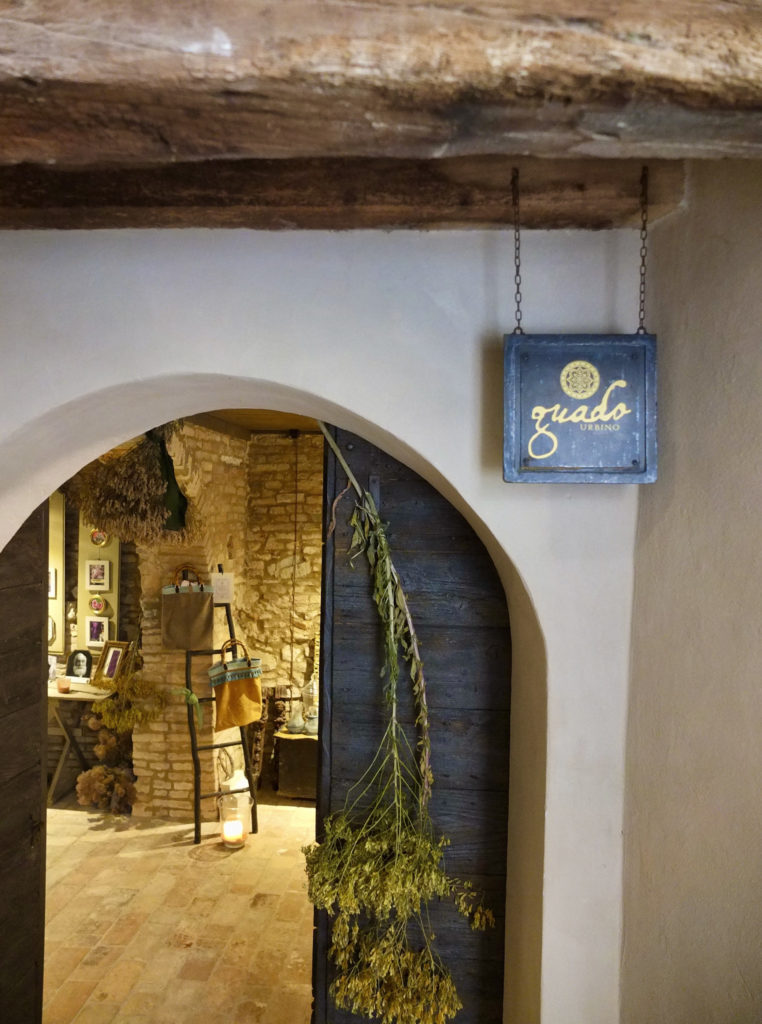
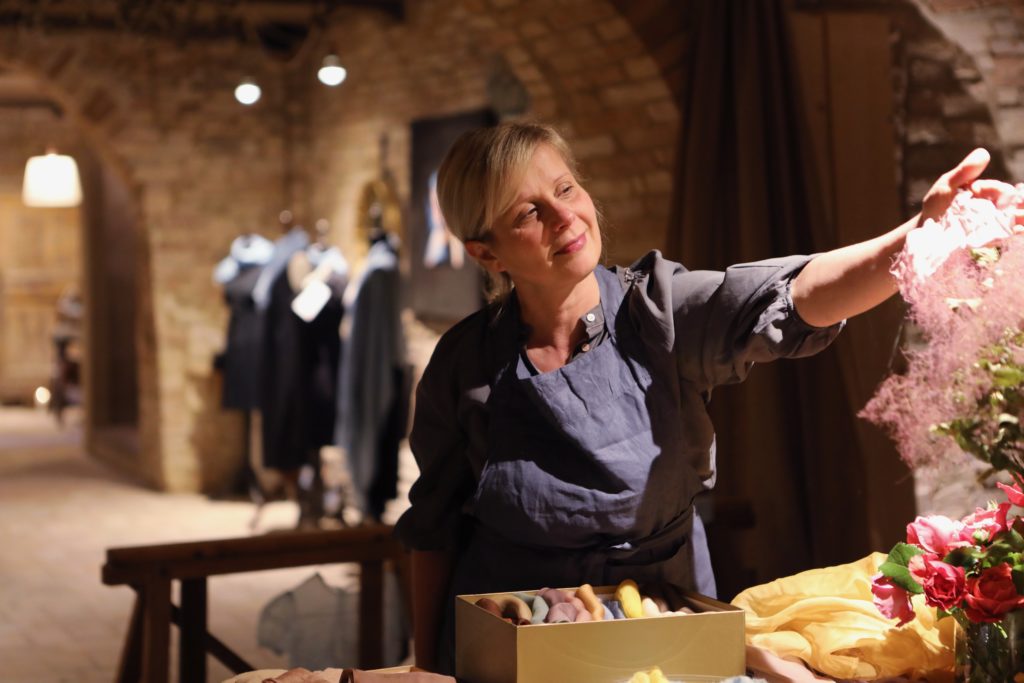
Guado is a natural fabric dyeing workshop owned and run by Alessandra. She specializes in making and using woad dye — the first blue dye that was created in Europe from leaves of the woad plant, a yellow-flowered member of the mustard family. She runs the business not only to make and sell scarves, stoles, and other accessories and clothing, but to tell history. In the historic building Guado that calls home, the ambiance is truly magical. The building which was once used to lodge horses, has incredible character and the charm of Alessandra’s many projects and talents can be seen all over. The shop was filled with smells of burning candles and the sight of plentiful handmade products carefully and meticulously placed. On her work table lay dried plants, including woad, and test strands of dyed fabrics labeled with the dye recipes.
Alessandra attended an arts high school, where she learned about woad dye. After school, she moved to Como for five years, where she worked at a design agency and did art restoration. Alessandra later moved to Switzerland for ten years where she worked in design and painted for art galleries. Alessandra made the decision to move back to Urbino in 2009. “All of my family is here, I wanted to be back in my hometown,” Alessandra said.
The woad plant was used to create the first blue dye in Europe, and was especially prevalent in Italy. Since there was only known to be the one plant to create blue at the time, blue clothing was rare and not commonly worn.
“There is a history of fashion in Italy specifically. It is in high demand by the nobility because it becomes a status symbol. Only the royals and the nobles use it,” Alessandra said.
Woad dye was used for thousands of years, up until the 16th century, when imported indigo started to take over. Eventually, woad dye was no longer used and remained a mystery until the 1980s.
Because the history of woad dye was only discovered about 40 years ago, most people are unaware of it. Alessandra was in high school when it was discovered, and the story attracted her so much she wanted to dig deeper into it.
The idea for Guado came to Alessandra about 30 years ago after learning the story of woad dye. She finally opened the shop in 2016 at the age of 44. While it was a major milestone for the long-time artist, it was not an easy task and she initially did not have a lot of support. “When I first told a consultant about my business idea, he told me I was crazy,”
“The Guado blue is different from any other color and has a different process,” Alessandra said. The blue dye color was traditionally created using a very complicated process, so Alessandra has worked to simplify the task to be as minimal as possible. The process – which once involved giant stone grinders, fermentation, and lots of labor – is all done by Alessandra herself and does not take nearly as much effort as it did during its peak popularity.
The pigment is extracted from the leaves of the woad plant and takes a powder form. The powder is mixed with an alkaline solution and the oxygen is removed. After the fabric is dipped into the vat dye, it is initially turned into a greenish yellow color. After the fabric is removed and then oxidized, it turns into the iconic Guado blue.
Alessandra sources natural fiber textiles that can be dyed without being treated. Her label gets sewed onto the fabric and the scarves while other products are sewed using natural threads. Regardless, it is important to Alessandra to use natural resources in all of her dyes. She then uses the dye she made in the shop to vat dye the pieces. They are then rinsed, dried, and ready to sell.
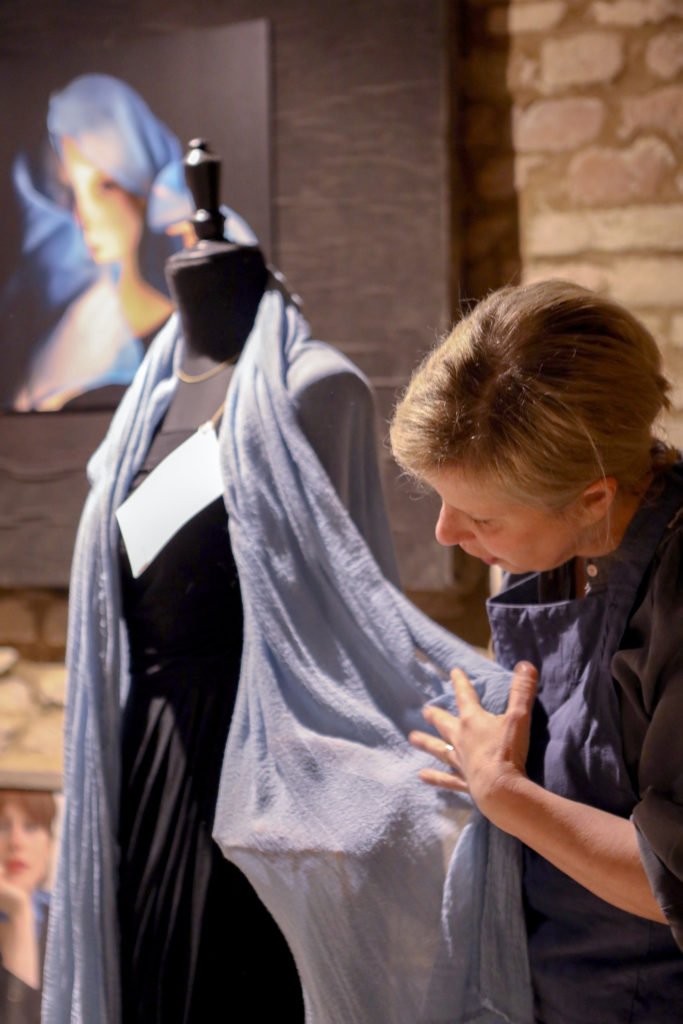
In her line of work, everything she creates has meaning behind it. This can be seen in the names of her products. Each accessory or piece of clothing Alessandra sells is named after an Italian woman who she admires. A stole she sells is named Laura Battiferri, who was a poet during the Renaissance period from Urbino. Small details to an outsider, but an extraordinary personal touch that gives Alessandra’s work its individuality. The photo to the left shows Alessandra and her best selling item Laura Battiferri.
Over the years, she has been invited to tell the story of the woad dye and has even spoken at the Ducal Palace in Urbino. “I’m not disappointed that more people don’t know about the history, because the interest in it is growing, and I’m happy about that.” She has also hosted school field trips so children have a chance to learn from her. “It’s nice to see them being surprised, learning of something that had disappeared. So seeing their joy gives me happiness,” Alessandra said.
Many of Alessandra’s customers are locals, but tourists also shop with her when visiting the area. In 2020, due to the COVID-19 pandemic, she started a website and began selling her products internationally. She now relies on this website for all of her sales.
Alessandra’s daughter also plays a part in her business. She mostly helps with marketing, taking photos and working on the website. One of their recent project ideas is to branch out and create something for newborns. “One of my biggest supporters is my daughter. It’s a beautiful thing. We collaborate on ideas to make the shop more beautiful and share the history.”
Alessandra is an admirable woman, for not only her dedication and creativeness, but her willingness to share. There is no doubt that anyone can learn something from spending time with her. “The most beautiful part of this job is to tell the story of how the color came to be and meeting people in the process,” Alessandra said. She is passionate about her work and has established a significant presence in her community, helping to teach people about forgotten history through Guado
The link to the Guado website can be found here: https://guadourbino.com/
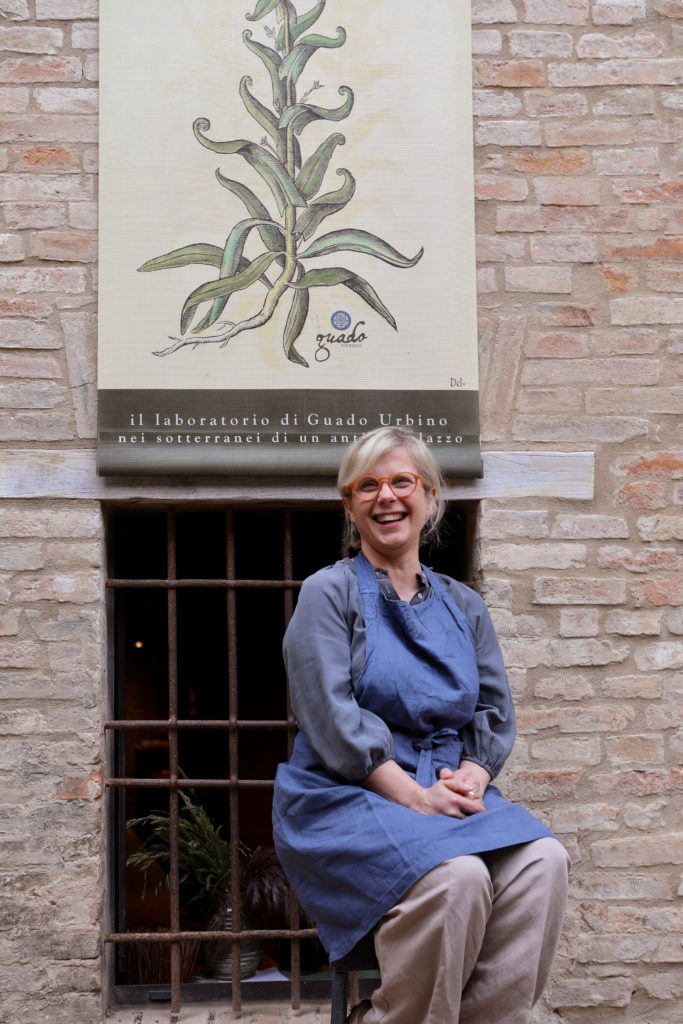
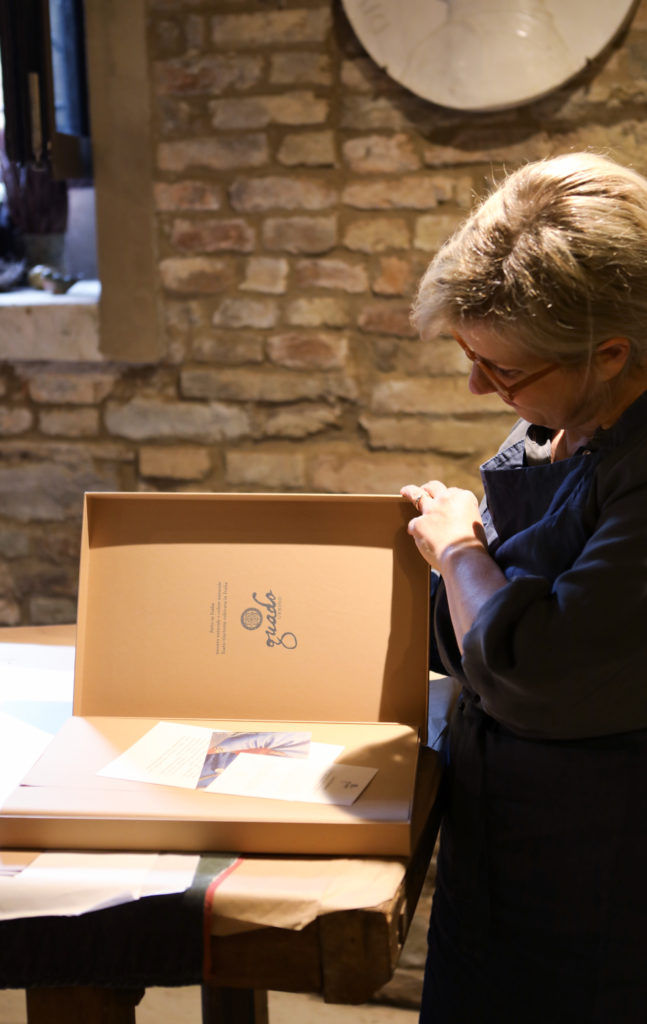
Page designed by Mikayla Freimuth
